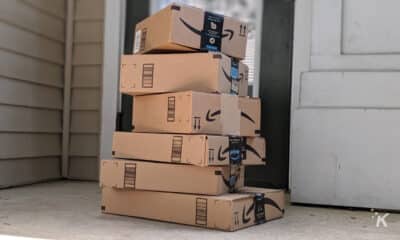Amazon
Amazon now has 1 million robots in its warehouses, new AI model
Right now, robots help out with around 75% of Amazon’s global deliveries.

Just a heads up, if you buy something through our links, we may get a small share of the sale. It’s one of the ways we keep the lights on here. Click here for more.
After 13 years of using robots in its warehouses, Amazon has hit a big milestone: it now has 1 million robots working in its facilities.
The one-millionth robot was recently delivered to a warehouse in Japan. This means Amazon’s warehouses could soon have just as many robots as they do human workers, according to The Wall Street Journal.
Right now, robots help out with around 75% of Amazon’s global deliveries.
Amazon also announced a new AI system called DeepFleet. This AI helps warehouse robots plan better routes inside the warehouses so they can move faster and work more efficiently.
Amazon says this new AI will make its robot fleet about 10% quicker. DeepFleet was built using Amazon SageMaker, a tool on Amazon Web Services (AWS) that helps create and train AI models.
Amazon trained DeepFleet with data from its own warehouses and inventory systems.
Over the years, Amazon’s robots have become much more advanced. For example, in May 2025, Amazon introduced a new robot called Vulcan.
This robot has two arms: one arm moves inventory around, and the other has a camera and a suction cup to pick up items.
Vulcan’s special feature is that it has a sense of touch, so it can “feel” what it’s grabbing, making it more careful and accurate when handling packages.
Amazon’s plans don’t stop there. Back in October 2024, the company announced new “next-generation fulfillment centers” that will have ten times more robots than their current warehouses.
These centers will still have human workers, but the robots will handle a lot more of the repetitive tasks. The first of these new advanced centers opened in Shreveport, Louisiana, near the Texas border.
Amazon’s journey into robotics began in 2012 when it bought Kiva Systems, a company that made warehouse robots.
Since then, Amazon has kept improving its robots to make deliveries faster and more reliably for customers around the world.
What do you think about Amazon’s use of robotics and AI in logistics? Do you foresee any issues? Tell us below in the comments, or via our Twitter or Facebook.































